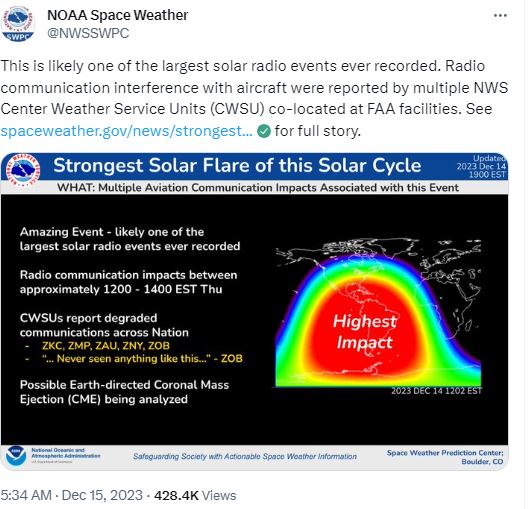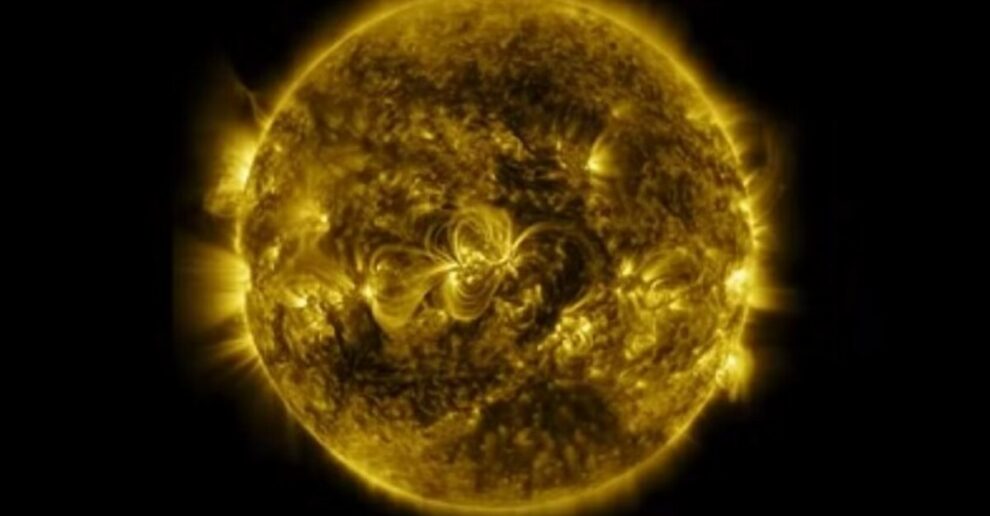According to NASA, a massive solar flare has erupted on the Sun, releasing a large amount of radiation energy, causing issues with radio communications with planes, Fox Weather reported. A spacecraft recorded the entire event on video.
Solar flare causing radio communication issues, largest since Sept. 2017, NASA reports
The pictures released by NASA on Thursday show the largest solar flare since September 10, 2017, according to NOAA’s Space Weather Prediction Center (SWPC).

Solar flares and other solar eruptions have a known impact on communications equipment, electrical grids, and even spacecraft. While no irregularities have been reported on the International Space Station, a scheduled SpaceX undocking was delayed due to weather conditions on Earth, not in space.
The flare, reported as an X2.8, ranks among the most intense events, unleashing a burst of radiation directed towards Earth. Space experts classify flares based on strength, starting with the smallest known as B-class, followed by C, M, and the most potent, X-class.
In each category, events are assigned numbers that aid in determining their scale. Consequently, the 2.8 rating falls on the lower end of the strong event spectrum. The most potent solar flare on record is thought to be an X45, occurring in 2003, although the majority of X-class events typically register between 1 and 9 on the scale.
The SPWC stated that the recent event was potent enough to result in high-frequency radio blackouts on Earth. Federal agencies characterized the occurrence as “one of the largest solar radiation events ever recorded,” noting substantial interference with radio communication for aircraft.
Increasing solar activity and insights into solar cycle 25 and aurora forecasts

